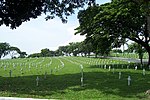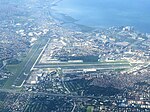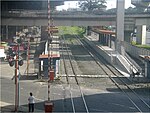Taguig–Pateros District Hospital
1994 establishments in the PhilippinesAsian hospital stubsBuildings and structures in TaguigHospitals established in 1994Hospitals in Taguig ... and 1 more
Philippine building and structure stubs
The Taguig–Pateros District Hospital (TPDH) is a municipal-funded hospital in the City of Taguig, Philippines. It was established by virtue of Republic Act No. 7842, which was passed into law on December 16, 1994, as a 100-bed hospital under the Department of Health. The hospital was turned-over to the City of Taguig in September 2006 by virtue of Executive Order No, 567, s. 2006.
Excerpt from the Wikipedia article Taguig–Pateros District Hospital (License: CC BY-SA 3.0, Authors).Taguig–Pateros District Hospital
East Service Road, Taguig
Geographical coordinates (GPS) Address Nearby Places Show on map
Geographical coordinates (GPS)
| Latitude | Longitude |
|---|---|
| N 14.51081 ° | E 121.03414 ° |
Address
Taguig-Pateros District Hospital
East Service Road
1630 Taguig
Philippines
Open on Google Maps










